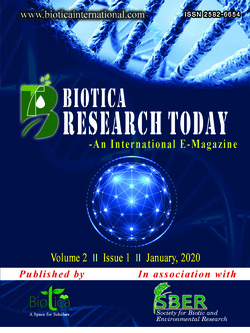
Global Warming Mitigation through Algal Biomass- Way Forward towards Green Technology
Dhayanath, M.
Division of Aquatic Environment and Health Management, ICAR-CIFE, Mumbai, Maharashtra (400 061), India
Abisha Juliet Mary S.J.
Division of Aquatic Environment and Health Management, ICAR-CIFE, Mumbai, Maharashtra (400 061), India
Tapas Paul*
Division of Aquatic Environment and Health Management, ICAR-CIFE, Mumbai, Maharashtra (400 061), India
DOI: NIL
Keywords: Biomass, Green, Global warming, Microbes
Abstract
Microalgae-based sequestration systems is more versatile and high energy efficient method for CO2 sequestration with respect to economic perspective and time consuming. Microalgae are more photosynthetically efficient and are able to mitigate CO2 from 10 to 50 times higher than terrestrial plants. They can utilise CO2 emissions from power plants and other industrial sources for their growth in a CO2 biosequestration process. Typically, 1 kg of microalgal biomass synthesis requires about 1.8 kg of CO2. Microbial carbon capture cells (MCCs) used in the production of algae were proved to be an effective technology for CO2 emission reduction with simultaneous voltage output without aeration. This article focuses on different techniques for culturing of microalgae, carbon reserve capacity of microalgae and recent advancement in production of algae for CO2 sequestration.
Downloads
not found
Reference
Lee, J.S., Lee, J.P., 2003. Review of advances in biological CO2 mitigation technology. Biotechnology and Bioprocess Engineering 8(6), 354.
Schenk, P.M., Thomas-Hall, S.R., Stephens, E., Marx, U.C., Mussgnug, J.H., Posten, C., Kruse, O., Hankamer, B., 2008. Second generation biofuels: High-efficiency microalgae for biodiesel production. Bioenergy Research 1(1), 20-43.
Singh, A., Nigam, P.S., Murphy, J.D., 2011. Renewable fuels from algae: An answer to debatable land-based fuels. Bioresource Technology 102(1), 10-16.
